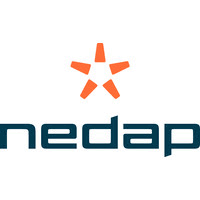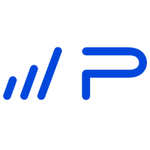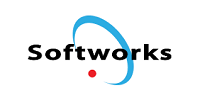Description

Nedap

Openpath
Comprehensive Overview: Nedap vs Openpath
Nedap: Overview
a) Primary Functions and Target Markets
Nedap is a Dutch technology company specializing in various business solutions, with a significant focus on security management. Their notable product in this space is Nedap AEOS, an access control system that offers a flexible and scalable platform for managing various security needs.
-
Primary Functions:
- Access Control: Offers card readers, controllers, and software to manage physical access to buildings and secure areas.
- Video Management: Integrates with video surveillance systems for enhanced security insights.
- Identity Management: Manages digital identities and credentials for secure access.
-
Target Markets:
- Enterprise businesses looking for integrated security solutions.
- Government institutions with stringent security needs.
- Healthcare facilities requiring compliant and secure access systems.
- Education sector, for managing access to campus facilities.
b) Market Share and User Base
Nedap predominantly serves the European market and has a growing international presence. They are well-regarded in the sectors they serve, although specific market share figures can be challenging to pinpoint without proprietary market analysis data.
c) Key Differentiating Factors
- Integration Capabilities: AEOS is noted for its ability to integrate seamlessly with various third-party systems, offering clients flexibility in their overall security architecture.
- Scalability: The system is designed to be highly scalable, catering to both small and large facilities.
- Innovation in Design: Emphasizes user-friendly interfaces and design, simplifying the management of complex security systems.
Openpath: Overview
a) Primary Functions and Target Markets
Openpath is a U.S.-based company focusing on smart security solutions, particularly in cloud-based and mobile access control systems.
-
Primary Functions:
- Mobile and Cloud-Based Access Control: Offers smartphone-based authentication that replaces traditional keycards with Bluetooth or Wi-Fi capabilities.
- Touchless Entry: Provides solutions for contactless building entry, enhancing convenience and hygiene.
- Remote Management: Cloud platform allows for remote access and control of the security system.
-
Target Markets:
- Office spaces requiring modern and flexible access control systems.
- Commercial real estate developers focusing on smart building technology.
- Small to medium-sized businesses seeking cost-effective yet advanced security solutions.
b) Market Share and User Base
Openpath is growing rapidly, particularly in North America, capitalizing on the trend toward smart buildings and Internet of Things (IoT) integrations. They appeal to tech-savvy markets emphasizing flexibility and mobility.
c) Key Differentiating Factors
- Mobile-First Approach: Openpath stands out due to its strong emphasis on mobile access, aligning with contemporary trends in consumer technology use.
- Cloud Integration: Their cloud-based model allows for seamless updates, remote management, and enhanced security features that evolve with technological advancements.
- User Experience: Prioritizes a simple, intuitive user interface to streamline management and user adoption.
Comparative Analysis
-
Technological Orientation: Nedap offers a more traditional and comprehensive suite of security solutions integrated with legacy systems, while Openpath focuses on modern, mobile-centric solutions that leverage cloud technology.
-
Scalability and Flexibility: Nedap provides extensive scalability suitable for large enterprise or institutional installations. Openpath, while scalable, is tailored more for flexible, dynamic environments like modern offices and commercial spaces.
-
Market Reach and Adoption: Nedap has a robust presence in Europe with a broader institutional focus, whereas Openpath is more popular in North America and targets modern businesses looking to innovate their security systems.
In conclusion, both Nedap and Openpath bring valuable yet different propositions to the access control market, each aligning with specific market demands and technological trends.
Contact Info

Year founded :
1929
Not Available
Not Available
Netherlands
Not Available

Year founded :
2015
+1 844-728-4247
Not Available
United States
http://www.linkedin.com/company/openpath
Feature Similarity Breakdown: Nedap, Openpath
Nedap and Openpath are both companies in the access control industry, providing advanced solutions for security and facility management. Here's a feature similarity breakdown:
a) Core Features in Common:
-
Cloud-Based Management:
- Both systems offer cloud-based solutions, allowing for remote management of access controls.
-
Mobile Access:
- Users can utilize their smartphones to unlock doors, leveraging Bluetooth, NFC, or Wi-Fi for secure and convenient access.
-
Scalability:
- Both platforms are scalable, capable of handling anything from small installations to large, enterprise-level deployments.
-
Integration Capabilities:
- They provide integration with various third-party systems, such as video surveillance, visitor management, and building management systems.
-
Real-Time Monitoring and Alerts:
- Real-time notifications and alerts help administrators monitor access events and act promptly in case of security breaches.
-
User Management:
- Both offer robust user management systems, enabling roles and permissions to be assigned easily to individuals or groups.
b) Comparison of User Interfaces:
-
Nedap:
- Known for its intuitive interface, Nedap’s solutions generally focus on ease of use with straightforward navigation. The interface tends to emphasize functionality over aesthetics, ensuring that users can quickly perform essential tasks without unnecessary complexity.
-
Openpath:
- Openpath is recognized for its modern, sleek, and user-friendly interface. The design is often more visually appealing with a focus on providing an easy-to-use experience for both administrators and end-users.
Both companies prioritize user experience, but Openpath may have an edge for users who value a more visually engaging and contemporary design.
c) Unique Features:
-
Nedap:
- Flexible Customization: Nedap tends to offer greater flexibility in terms of system customization and configuration, allowing users to tailor the access control system to specific organizational needs.
- Long-Range Identification: Nedap is particularly strong in long-range identification, especially useful for vehicle access control.
-
Openpath:
- Remote Unlock from Anywhere: Openpath stands out with its ability to unlock doors remotely via a mobile app or web interface, regardless of the user’s location.
- Automated Health and Wellness Features: Openpath has integrated solutions focused on health compliance, such as touchless entry and occupancy monitoring, which gained prominence during the COVID-19 pandemic.
Nedap’s strength lies in its flexibility and specialization in certain areas like long-range monitoring, whereas Openpath excels in remote functionality and modern interface design. Users should evaluate their specific needs to determine which system aligns better with their organizational or personal preferences.
Features

Not Available

Not Available
Best Fit Use Cases: Nedap, Openpath
Nedap and Openpath are both renowned for their innovative access control solutions, but they cater to different needs and preferences depending on the type of business, project scope, and industry requirements.
Nedap
a) Best Fit Use Cases for Nedap:
-
Large Enterprises and Complex Organizations: Nedap is well-suited for large enterprises that require highly scalable and flexible access control solutions. With its robust software and hardware options, Nedap can handle complex requirements and integrate seamlessly with various IT systems.
-
Healthcare Facilities: Nedap offers specialized solutions that can comply with strict healthcare regulations, providing reliable access control for sensitive areas while ensuring ease of access for authorized personnel.
-
Education Institutions: Universities and large campuses can benefit from Nedap’s ability to manage multiple access points and large-scale facilities efficiently. The system’s scalability and integration capabilities make it a suitable choice for educational environments.
-
Industrial Complexes: With a focus on security and operational efficiency, Nedap is ideal for industrial settings where access control is critical for safety and regulation compliance.
d) Industry Verticals and Company Sizes:
Nedap caters to industries like healthcare, education, enterprise, and industry by providing highly customizable and scalable solutions. It is particularly well-suited for medium to large-sized organizations that need to manage complex access requirements and integrate with existing IT infrastructures.
Openpath
b) Preferred Use Cases for Openpath:
-
Modern Workspaces and Startups: Openpath’s cloud-based access management system is a perfect fit for modern work environments that value flexibility, ease of use, and seamless mobile integration.
-
Small to Medium-Sized Businesses: Openpath offers a straightforward, cost-effective solution that caters to the access control needs of SMBs without involving complex infrastructure.
-
Multi-Tenant Buildings: Its mobile-first design and user-friendly interface make Openpath ideal for shared spaces, co-working environments, and multi-tenant buildings where quick and easy adjustments to access permissions are frequently required.
-
Facilities Seeking Smart Building Upgrades: Companies focusing on smart building initiatives can leverage Openpath’s features like touchless entry and mobile credentials as part of their smart office strategies.
d) Industry Verticals and Company Sizes:
Openpath appeals to industries such as real estate, technology, and coworking spaces by offering flexible, easy-to-deploy access control systems. It is especially advantageous for small to mid-sized companies and organizations looking to adopt the latest technology without the complexity and cost of more extensive setups.
Conclusion
While both Nedap and Openpath provide excellent access control solutions, their best fit use cases, industry verticals, and company sizes differ significantly. Nedap is more suited for large, complex environments needing extensive integration and compliance features, while Openpath excels in providing flexible, modern, and user-friendly solutions for smaller and emerging businesses.
Pricing

Pricing Not Available

Pricing Not Available
Metrics History
Metrics History
Comparing teamSize across companies
Conclusion & Final Verdict: Nedap vs Openpath
To provide a well-rounded conclusion and final verdict for Nedap and Openpath, let's evaluate which product offers the best overall value, the pros and cons of each, and specific recommendations for potential users.
Conclusion and Final Verdict
a) Best Overall Value
The best overall value between Nedap and Openpath depends heavily on the specific needs of the user and the context in which the access control systems are applied.
-
Openpath often provides a more modernized, flexible, and mobile-friendly solution, especially appealing for users who prioritize cutting-edge technology and ease of use. Its cloud-based management and robust mobile access capabilities are strong points for businesses focusing on forward-thinking solutions and user experience.
-
Nedap, on the other hand, offers a more traditional and possibly robust system that can integrate well into larger, more complex security environments. It tends to excel in scenarios where high scalability and comprehensive integrations with existing systems are required.
In terms of cost, Openpath's subscription-based model may prove cost-effective for SMBs looking for scalable solutions without a large upfront investment. Nedap, however, could offer better value for large enterprises with complex security needs, despite potentially higher initial costs.
b) Pros and Cons
Openpath Pros:
- Strong mobile access capabilities and user-friendly interfaces
- Flexible, scalable cloud-based system
- Quick installation and easy updates
- Modern aesthetics and design
Openpath Cons:
- Subscription fees can add up over time
- Less suitable for highly specific or more complex security integration requirements
- Dependence on a reliable internet connection
Nedap Pros:
- Robust integration capabilities with existing security systems
- High scalability for large enterprises
- Established reputation in the market
- Comprehensive security features tailored to complex needs
Nedap Cons:
- Higher initial costs
- More traditional approach may lack modern IT-friendly interfaces
- Can be overly complex for smaller applications
c) Specific Recommendations
For businesses deciding between Nedap and Openpath, the choice largely hinges on their size, specific security needs, and budgetary constraints:
-
For Small to Medium Businesses (SMBs): Openpath often represents the better choice due to its flexible and modern app-based approach, professional appearance, and ease of deployment and management.
-
For Large Enterprises: Nedap might deliver better long-term value with its ability to integrate complex legacy systems and support extensive scalability, crucial for companies needing high-security environments with diverse requirements.
-
For Businesses Prioritizing Mobile Access and Ease of Use: Lean towards Openpath for its superior mobile app support and user-friendly features.
-
For Businesses with Extensive Integration Needs: Nedap should be considered, given its robust integration capabilities with existing systems like video surveillance and visitor management.
In essence, users should carefully assess their long-term needs, budget, and how well each system aligns with their current infrastructure and future growth plans. It may also be beneficial to consult with a security solutions expert to better tailor the choice to their unique requirements.
Add to compare
Add similar companies



